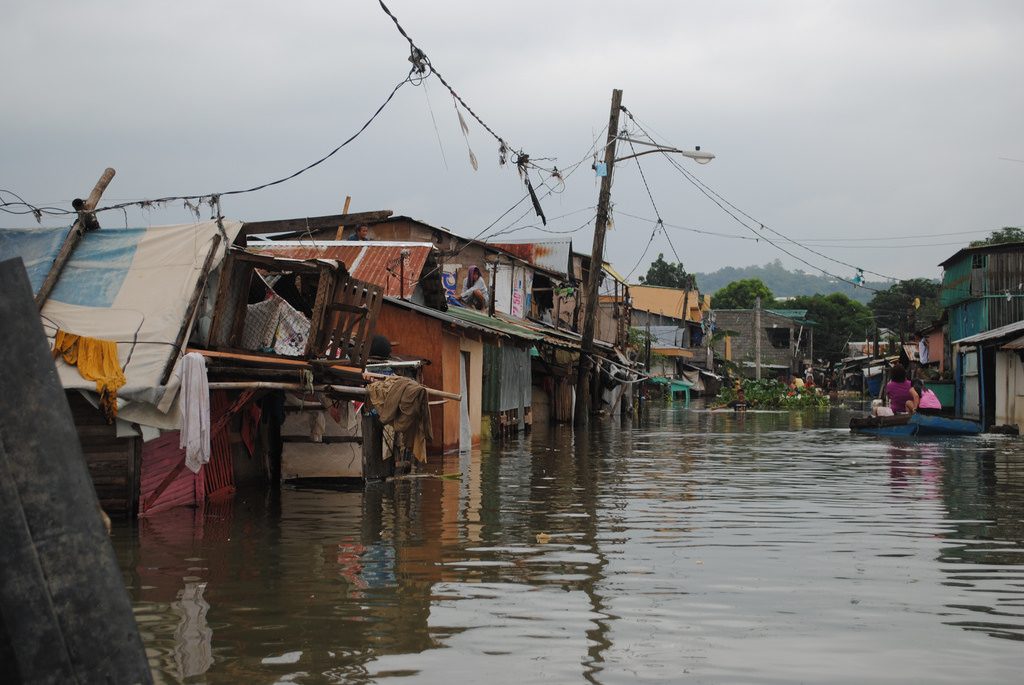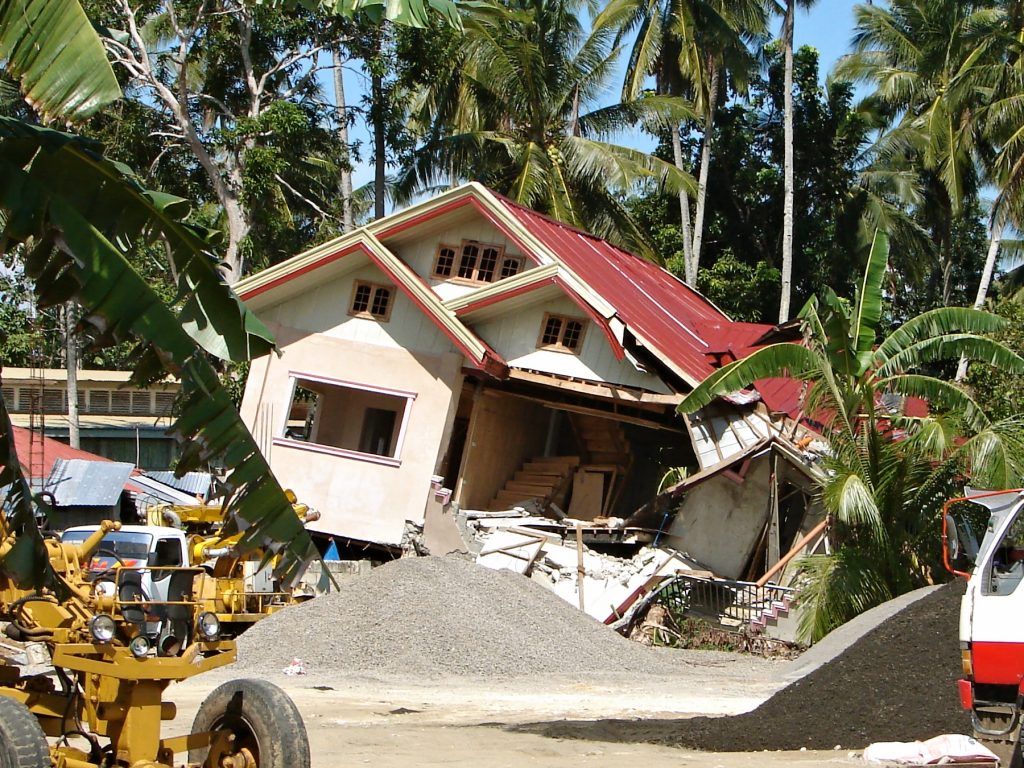Natural disasters in the Philippines, unfortunately, happen on a regular basis. Everything from typhoons and earthquakes, through to volcanic eruptions and floods. Hopefully, the Survival Tips in this article will help you to avoid these disasters and help to enhance your chances of survival in this country.
Natural Disasters In The Philippines
The Philippines is a tropical country which means that the temperature is pretty much the same all year round. The main difference is that for half of the year it is relatively dry, and for the other half it is wet. The dry season is typically between December and April and the wet season is typically between May and November.
If you are planning on coming to the Philippines for a holiday, it is important that you take into consideration the time of year in which you will be travelling. When it is the wet season from May to November, there is a considerable amount of rain during this time. This doesn’t necessarily mean that it rains every day. However, when it does rain, it can rain for prolonged periods of time. Generally speaking, it will rain mostly in the afternoon. Therefore, if you plan your outdoor activities carefully, try to finish these in the morning. This way you can avoid having the rain disrupt your activities.
The wettest time of the year is July, August and September. This time of year is the monsoon season or “habagat”. During this time of year, it can rain for days and days nonstop. This can lead to floods and landslides which can cause massive disruptions to your travel plans. The monsoon normally occurs in the south-west of the country and moves very slowly northwards. However, the typhoons always come from the east off the Pacific. When they meet together with the monsoon rains, this can really cause havoc.

Floods like this are a common sight during wet season in the Philippines. Thousands of people are usually affected and the amount of damage caused can reach millions of dollars. Some people say the drainage here is poor and while it might not be great, I’m not sure there are too many drainage systems that can cope with such a large amount of rain in such a short period of time.
For those not familiar with typhoons, they are basically a hurricane or a northern hemisphere cyclone. They can start in the form of a tropical depression and build right up to a super typhoon with wind speeds of up to 220kmh. In this day and age of internet and social media, there is normally enough advanced warning of when a typhoon will strike and the likely path in which it will head. This gives you ample time to prepare accordingly. One of the main side effects of a typhoon is a blackout (called a brownout in the Philippines). If there is no backup power you can sometimes be without power for a few days. If you are in a remote provincial area, this can sometimes take even longer.

This is a satellite image of a typhoon passing over the Philippines. You can see a map of the Philippines superimposed over the typhoon and this shows just how big and deadly some typhoons can be. This typhoon is just about bigger than the entire country!
The worst typhoon I was involved in was Typhoon Milenyo in 2006. This typhoon caused around US$750million of damage and killed almost 320 people across the Philippines, Vietnam and Thailand. It struck Manila directly and was the first time I have ever experienced a typhoon. I had never experienced anything like this in my life. There were large tree branches being ripped off trees like small twigs, sheets of corrugated iron blowing down the street like discarded candy wrappers and a howling wind, unlike anything I had ever heard. The rain was almost horizontal and was coming down with extreme ferocity turning the streets into rivers.
During the wet season, it can be a difficult time to organize travel. With the Philippines being in a typhoon zone, typhoons can strike at any time during the wet season. This can result in flight cancellations which can certainly throw your travel schedule into disarray. As a result of this, there can be backlogs of passengers that build up while the airlines work through rebooking flights for those that wish to proceed with their flights.
On the other hand, the best time of the year to come to the Philippines weatherwise is February and March. This is known as summertime in the Philippines. The weather each day during this period is generally perfect, but it can get very hot. This is usually the best time to hit the beaches. However, you need to make sure that you have adequate sun protection if you’re spending time outdoors or in the water. If you just come from a country that has recently experienced winter, your enthusiasm to feel the warm sun on your body could lead you to be burnt to a crisp. This can cause you some discomfort and inconvenience for a few days. It is important not to underestimate the power of the sun in a tropical climate.
Earthquakes And Tremors
As I have previously mentioned in Survival Tip#1, the Philippines is located on the Pacific Ring of Fire. This means there is a lot of seismic activity in this country. It has been said that the Philippines encounters between 4 to 10 earthquakes every day, and there are between 3 to 10 strong earthquakes each year. Luckily Manila doesn’t experience many major earthquakes, although earth tremors are fairly common.
Earthquakes are more difficult to predict than typhoons. Therefore, extra precautions need to be taken to ensure your safety during an earthquake. I won’t go into the details now of what needs to be done in preparation for an earthquake, as there are a number of guides available online to help you with this.

This is a home that was destroyed by a magnitude 7.2 earthquake in Tubigon, Bohol, on October 15, 2013.
With the Philippines being surrounded by water, tsunamis are also one of the main considerations when an earthquake occurs. Therefore it is important to recognise early warning signs of a tsunami, particularly if you are spending time in a coastal area. Once again there is plenty of information available on the internet with regard to tsunamis.
Hopefully, these Survival Tips on personal safety will help to enhance your chances of survival in the Philippines. For the next survival tip on Corruption In The Philippines, please click Survival Tip #15 to read more. If you missed the previous survival tip on Personal Safety In The Philippines, click Survival Tip #13 to read more. If you have any comments or experiences with natural disasters in the Philippines, such as earthquakes or typhoons, please feel free to leave your comments below. I would love to hear from you.
Philippines Fun Fact:
The Philippines experiences one large-magnitude earthquake (7.75 or higher on the Richter scale) every 10 years, seven earthquakes of major magnitude (7.0 to 7.4) every 10 years, and five earthquakes of moderate magnitude (6.0 to 6.9) every year (courtesy of https://www.factretriever.com/philippines-facts).


